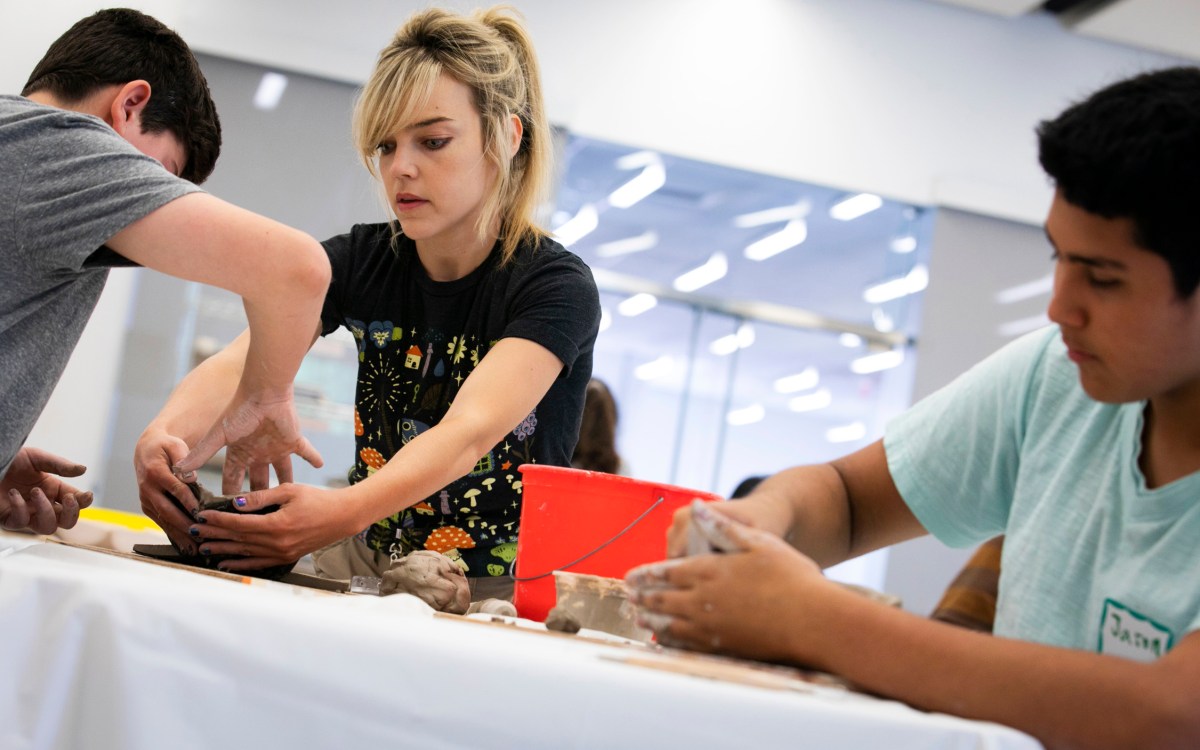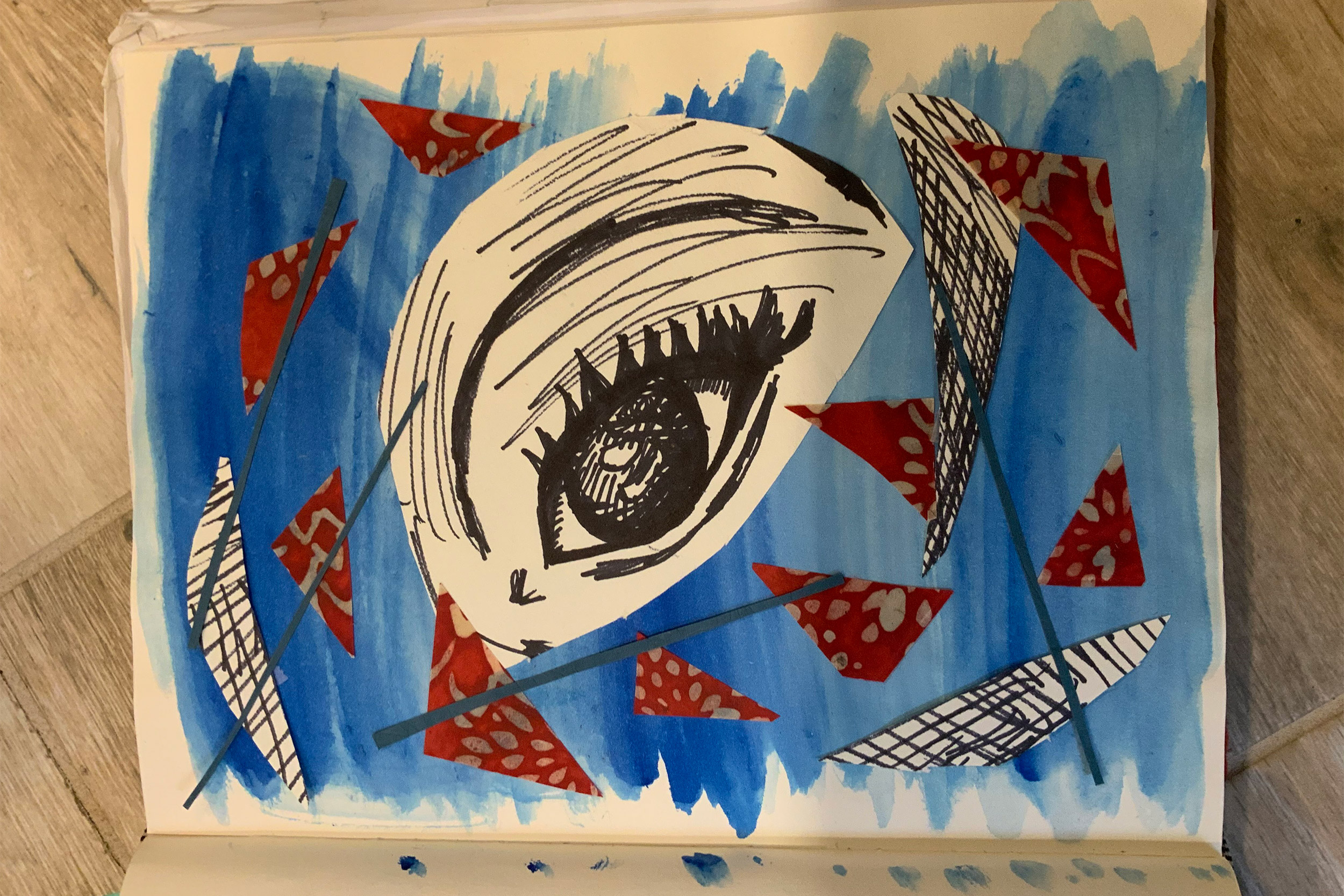
Artist Chanel Thervil created this featured collage to demonstrate artistic techniques for students to try during their online Mural Club sessions with the Ed Portal.
At the Harvard Ed Portal’s Mural Club, ingenuity first
Moving online didn’t stop the session from being a success
When Allston-Brighton students joined the Harvard Ed Portal’s Mural Club: Street Art & Community earlier this spring, they hoped to create a public mural to represent them and their community. The students began the semester in person but quickly had to transition to remote learning due to the COVID-19 pandemic — but that didn’t stop them from creating their own works of art.
In past sessions of the Mural Club, Allston-Brighton students in grades six through eight spent eight weeks working with two instructors: a Boston artist and educator and an intern from the Harvard Graduate School of Education. Together, they created public murals for their local communities.
This year, students instead produced individual works of art with virtual guidance from their instructors, local artist Chanel Thervil and Harvard undergraduate Gabi Maduro Salvarrey. Although the club functioned differently than in the past, students said it was still exciting to explore online and produce their own work.
“My most memorable moment was when we made stencils and used them to paint. It was the first time I had done this!”
Sami Kayi, sixth-grader
Using art supplies the Ed Portal shipped to them, students produced colorful portraits, cartoon characters, and nature scenes that they incorporated into their final projects.
“My most memorable moment was when we made stencils and used them to paint. It was the first time I had done this!” said sixth-grader Sami. Joe, who’s in the eighth grade, said he enjoyed exploring abstract art. Sammy, who’s also in the sixth grade, said, “When we went on field trips, it was really great to see all of the beautiful murals, and how creative the artists were.”
Thervil said managing the remote transition was a group effort, with help from Ed Portal staff brainstorming ideas and troubleshooting technical experiments.
“Since physically creating a mural was the initial focal point that I created the curriculum around, quarantine meant that I had to go back to the drawing board,” said Thervil. “There was a lot of thinking deeply about student interests, access to materials at home, art-making that could translate despite the digital divide, and realistic acceptance of what folks would have the mental and emotional capacity to focus on given the impact of COVID-19 and quarantine on everyone’s health and well-being.”
Image gallery
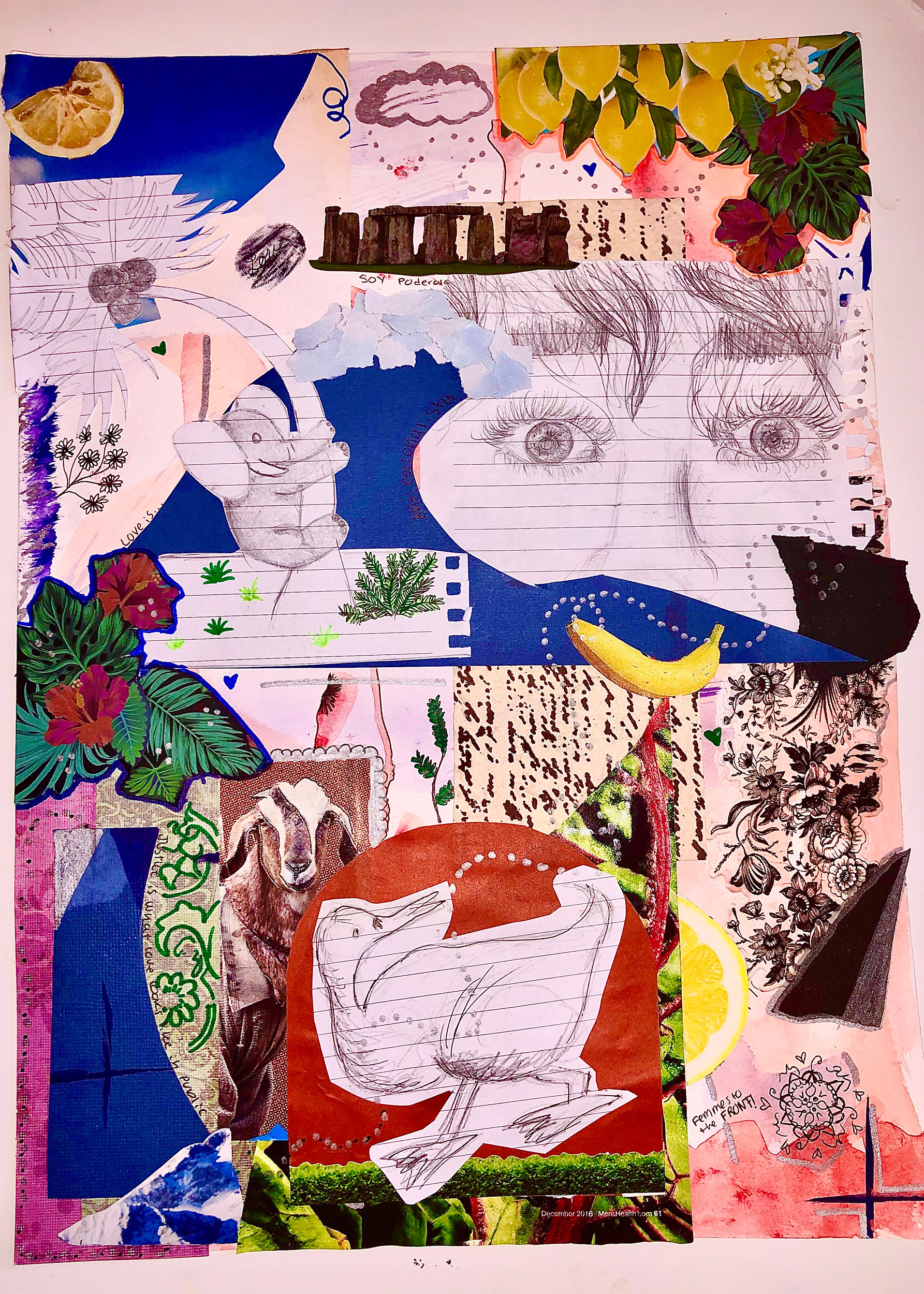
Gabi Maduro Salvarrey mural.
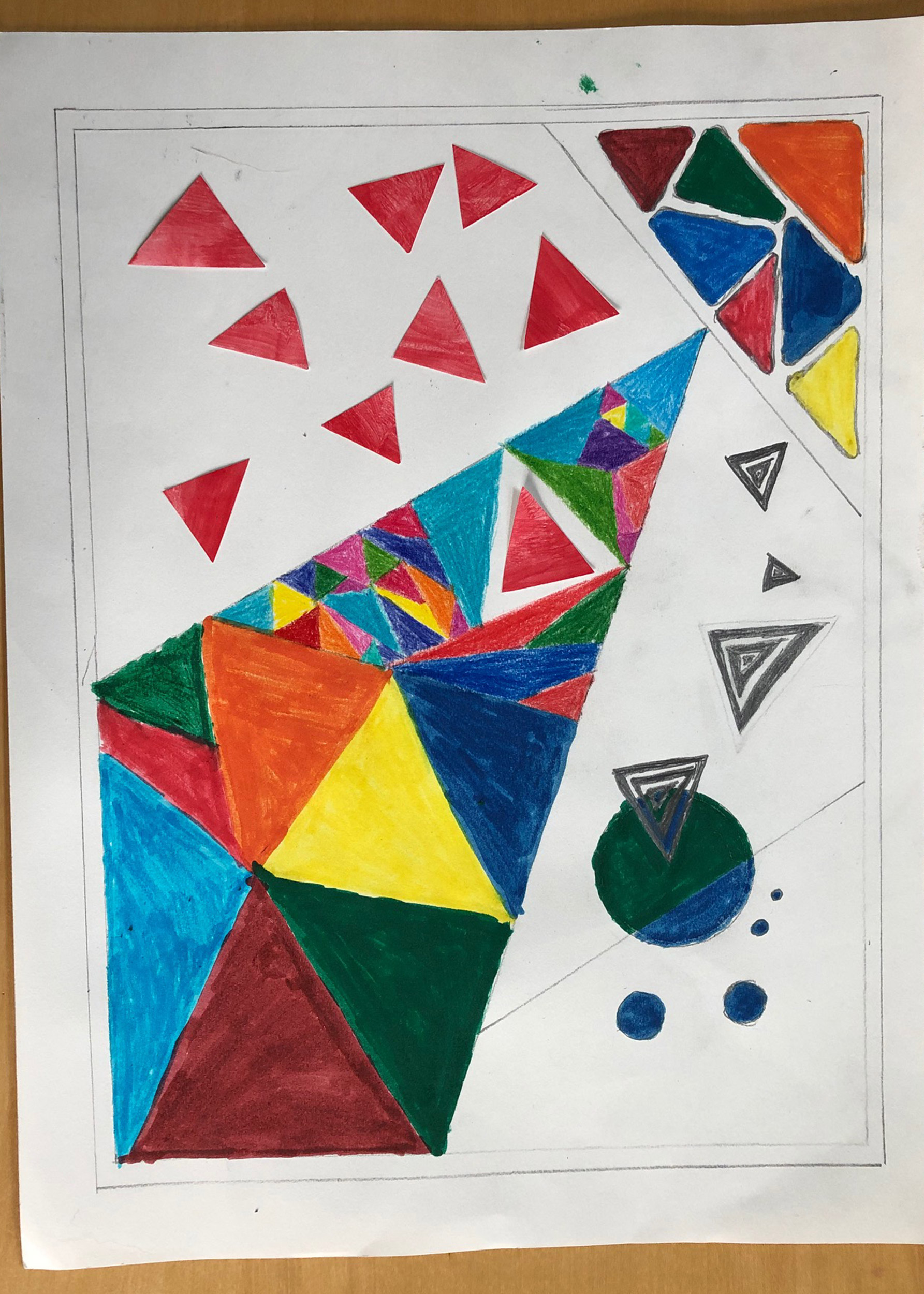
Joe Klinman mural.
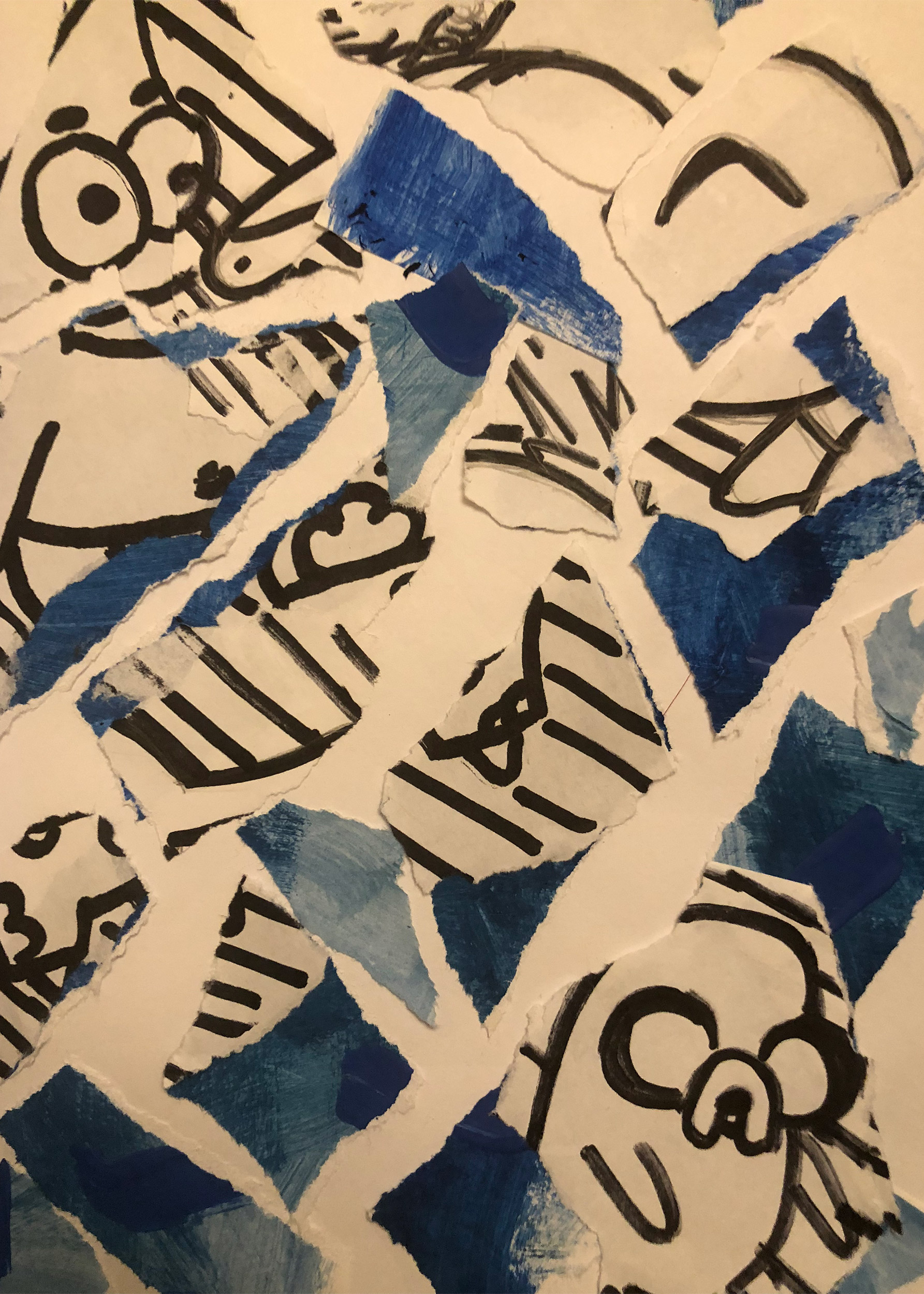
Sami Kayi mural
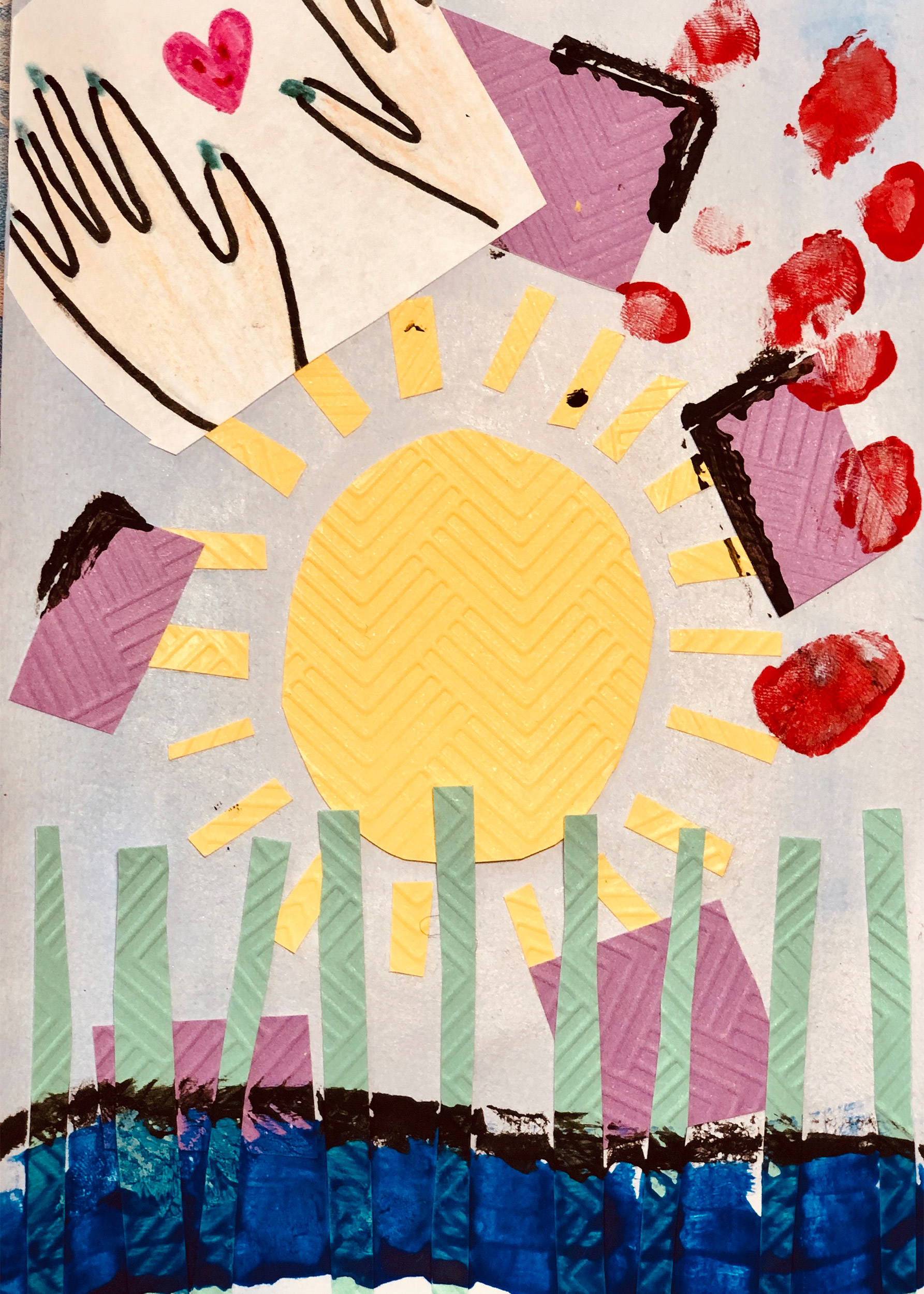
Shuvana Pradhan mural.
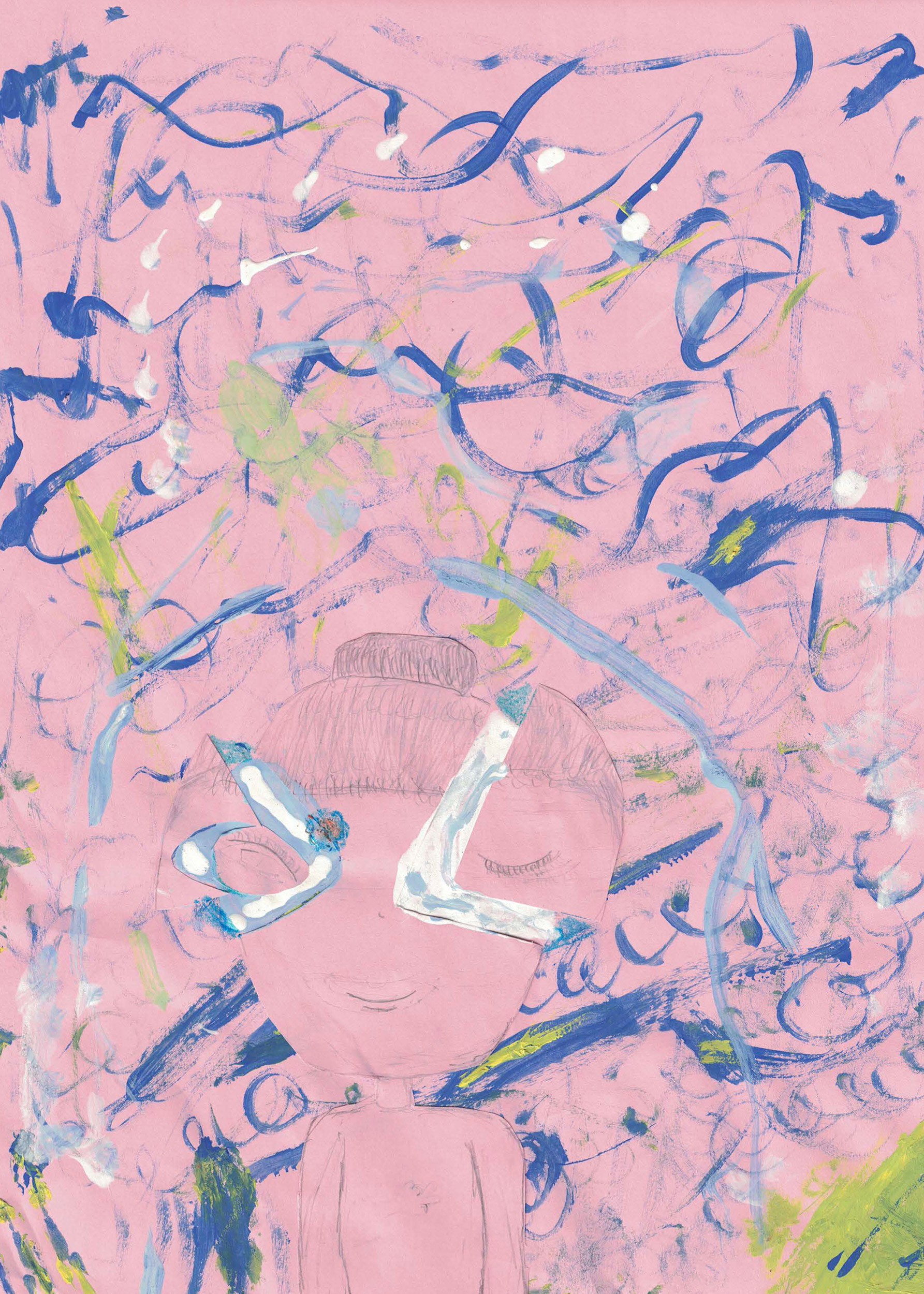
Samantha Lee mural.
Maduro Salvarrey said the online transition was tough due to the collaborative nature of Mural Club, so together she and Thervil focused on adapting elements of murals to individual works of art and used student input and feedback to help adjust the program.
“This club was great for me and for the students, as it provided an artistic outlet as well as a community during this difficult transition,” she said. “Even though the initial goals of the club may not have come to fruition entirely, I believe our adjustments were exactly what the kids needed at this time.”
Thervil said that seeing how many people have been exploring baking and other hands-on activities during quarantine gave her the sense that people are craving ways to stay busy.
“For me, art has always been my way of processing things that feel difficult to talk about,” said Thervil. “We also know that art has many beneficial effects on mood. It felt great to provide a small window each week that let folks press pause on their anxieties and dive into learning about various artists and techniques to fuel a creative outlet.”
Thervil added that it’s important to keep students engaged when learning virtually.
“A big element of my pedagogy as an educator hinges on the fact that having multiple entry points to a topic or skill is a concrete way to keep folks engaged,” she said. “From session to session there was a blend of icebreakers, videos, pictures, discussion, and draw-as-a-response activities used to support the skills we were building.”
Maduro Salvarrey said despite the changes to their teaching model, she greatly enjoyed helping lead the program, as it was her first time co-moderating a club through the Ed Portal mentorship program.
“It was a very fulfilling experience overall and I would recommend it to other mentors as an opportunity to learn new skills and knowledge from an expert from the community,” she said. “I found it very valuable to work with Chanel this semester, because I learned her approach to structuring curricula while also learning about art and how to teach art.”
Creating murals in particular helps develop compromise and collaboration among students, Thervil said.
“As an individual you have to accept discomfort, listen to collaborators, and come up with a design or solution that honors everyone’s presence and still completes the goal,” said Thervil. “I would hope that runs parallel to experiences that students and their families can apply to any other facet of life.”
Maduro Salvarrey added that it was exciting to see the students’ progress through the course of the program.
“I saw a lot of students grow and become more confident in showing off their work and sharing how they genuinely felt, which was great to see,” she said.




